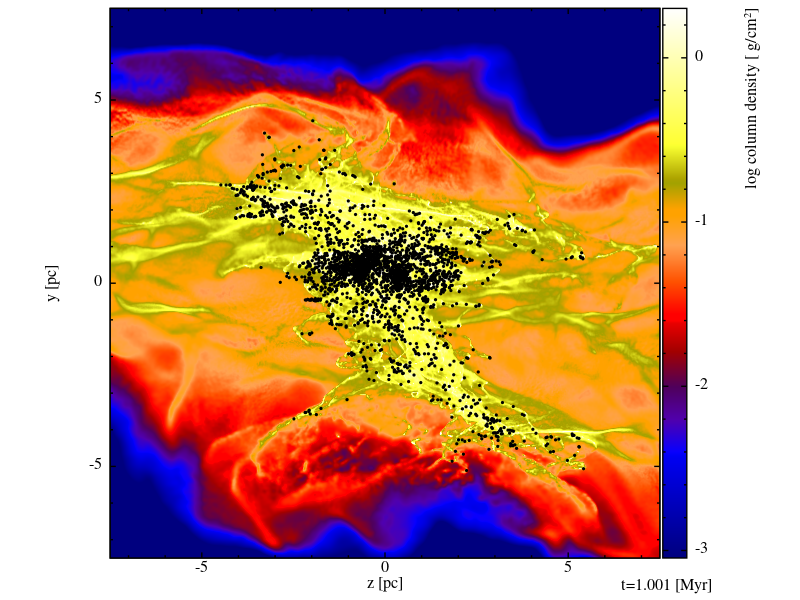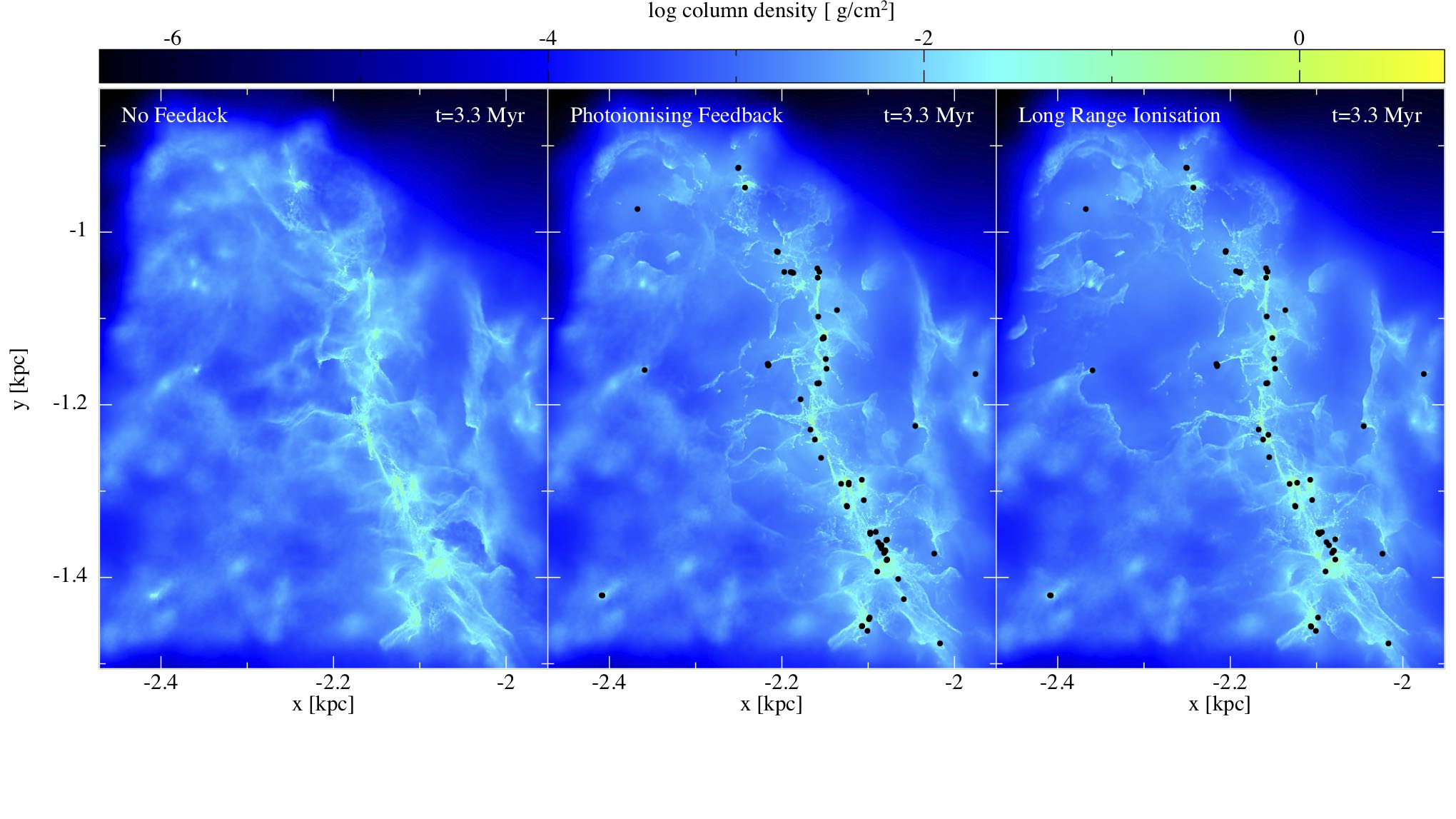Research
- Cloud-Cloud Collisions
- Stellar Feedback
- Properties of Star Clusters
Young massive clusters (YMCs) are abundant in interacting galaxies such as Antennae galaxies, but less in quiescent galaxies like the Milky Way. One theory is that YMCs are formed through colliding giant molecular clouds, which happen more frequent in highly dynamic environment. These clouds are hundreds of light-years in size and can be as massive as 1,000,000 solar masses, so there is enough gas for star formation when the clouds collide. At ICYBOB, we perform smoothed particle hydrodynamics (SPH) cloud-cloud collision simulations to investigate the optimum initial conditions to form massive clusters.

We are interested in stellar feedback from stars more massive than 8 solar masses. Feedback processes affect the dynamics and thermal properties of gas in star-forming regions. For example, photoionization heats gas from 10 K to 10,000 K, which then expands into the cold ISM. Stellar winds can carve bubbles around massive stars. At the end of their lifetime, massive stars explode as supernovae, releasing energy and momentum into the ISM. This feedback has an impact on when, where, and how the stars themselves form, on the scale of both individual clusters and interacting giant molecular clouds (GMCs). We focus on the latter using sections extracted from galaxy-scale models using SPH, and re-simulating them at higher resolution. The re-simulations provide more realistic initial conditions from which neighbouring GMCs are able to interact as a result of feedback.

Star clusters are the building blocks of our Galaxy, as most stars are formed in clusters. Therefore to better understand the star formation process requires following the evolution of (i) stars in clusters and (ii) clusters collectively on a Galactic scale. At ICYBOB, we study the spatial and kinematic behaviour of clusters as they evolve, identifying changes and comparing differences in their properties at various stages. In addition, we look at how observing conditions impact the conclusions we draw about cluster evolution.
![Application of INDICATE to the Carina Nebula. [Image from Buckner et al. 2019] Carina_INDICATE](/images/Carina_index_known_3sigma.jpg)
